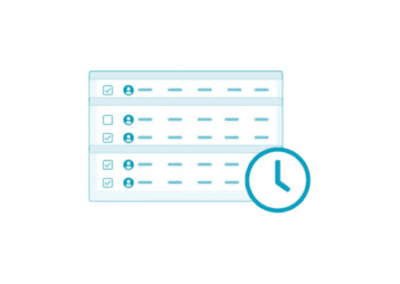The Work Opportunity Tax Credit (WOTC) is a federal tax credit available to employers, rewarding them for every new hire who meets eligibility requirements.
The WOTC program not only reduces the nation’s unemployment levels, but also affords business owners a tax credit of $2,400 to $9,600 for each eligible new hire. Each year, companies claim roughly $1 billion in tax credits under the WOTC program. WOTC is designed to empower individuals from nine target groups that have historically faced significant barriers to employment.
“Encouraging employers to hire those who have the most trouble finding work is good policy, and that’s why we should make the Work Opportunity Tax Credit permanent.”
– Senator Rob Portman (R-OH). (1)
Who is Eligible?
Those who are included in this program include veterans, TANF (Temporary Assistance for Needy Families) recipients, SNAP (food stamp) recipients, ex-felons and other applicants with significant barriers to employment. The veteran category alone is worth up to four times the amount of a regular WOTC qualifier. This provides an immediate tax benefit to companies who hire veterans.
Through geographic incentive credits, the federal government has also designated certain economically depressed areas as tax advantage areas, or Empowerment Zones. If your business is located in one of these areas and you employ individuals living here, you can earn credit against your federal tax liability.
The program creates incentives to employers that hire groups who may struggle to find work elsewhere. Therefore, it works for both parties. Businesses not using this program are missing out on something incredibly valuable. Not only is it a business opportunity (improving your bottom line), but it’s a way to make a huge difference in people’s lives and also increase employee retention. A detailed breakdown of the different eligibility groups is shown below:
(Credit: Corporate Tax Incentives)
Some potential employees may meet all the other criteria but still don’t qualify if they are former employees, majority owners in the business, or relatives of the employer (parents, children, siblings, etc).
How Does a New Employee Qualify?
During the hiring process, there are two forms the employer and the applicant must complete. You won’t be able to receive the credit if you don’t complete the forms during the hiring process.
First, the employer and the applicant must complete IRS Form 8850, which is the IRS pre-screening form. When the offer of employment has been accepted, the applicant completes the first page proving their eligibility. Once the applicant is hired, the employer completes the second page giving your information. Second, employer and applicant must complete the Department of Labor Form 9061.
The employer must submit these two documents to their state employment agency no later than 28 days after the employee commences work. You will then be notified by the agency advising you of the employee’s eligibility status.
Wage Stipulations to Consider When Applying for the Tax Credit
In terms of paying the wages for the employee, there are a few things to keep in mind. Wages must be paid in the first year of employment. In order to receive the tax credit from the IRS, the employer will have to make this application after one year of employment. Federal Unemployment tax (FUTA) must be paid, and the employee must have been paid directly by the employer’s business – not from some other intermediary.
Hours Worked and the Maximum Work Opportunity Tax Credit
The number of hours worked by an employee also has an effect on the maximum amount of the WOTC. In general, a business can claim up to 40% of the new employee’s first year wages, although there is a maximum amount depending on the classification. If the employee works 120 hours at minimum, an employer can claw back up to 25% of the wages, or up to 40% once a minimum of 400 hours have been recorded. When claiming the tax credit (by filling out IRS form 5884 alongside a tax return), calculate the wages of the employees and multiply each total by the quantity of hours worked, and then factor in the percentage which is eligible to claim.
That can be a lot of work, especially if a company has a large number of employees. Our next section tackles how to ease the burden on employers.
Where Does Software Fit Into All Of This?
Technological advancements have revolutionized the way companies secure and maximize tax credits. Some of these cutting-edge advancements include powerful cloud-based computing platforms that integrate seamlessly into a company’s recruiting and onboarding system.
This simplifies the employer’s recruiting and onboarding process. Employers will be able to see any relevant tax credit programs that may be applicable.
A proud partner of Celayix, Walton management, can help companies throughout the recruiting and WOTC integration process. They make it easy to onboard these employees and to fully capitalize on the WOTC program.
What role does Celayix play?
At Celayix, we integrate with all kinds of platforms. These include ADP, Quickbooks and SAP, among others. Regardless of the systems you use, our workforce software can seamlessly integrate with the platforms you currently use. This helps you take advantage of programs like WOTC. Once the employees have been on boarded, our workforce management solutions will allow you to effectively streamline your HR processes. In doing so, we save you money, time and effort in more ways than one.
A few simple examples are as follows:
- Eliminate overtime
- Drastically reduce scheduling efforts
- Avoid lateness and missed shifts
- Accurately monitor and forecast time & attendance data
- Improve communication
- Ensure employee & customer satisfaction
If you’d like to find out more, our attentive support staff are always happy to help.




